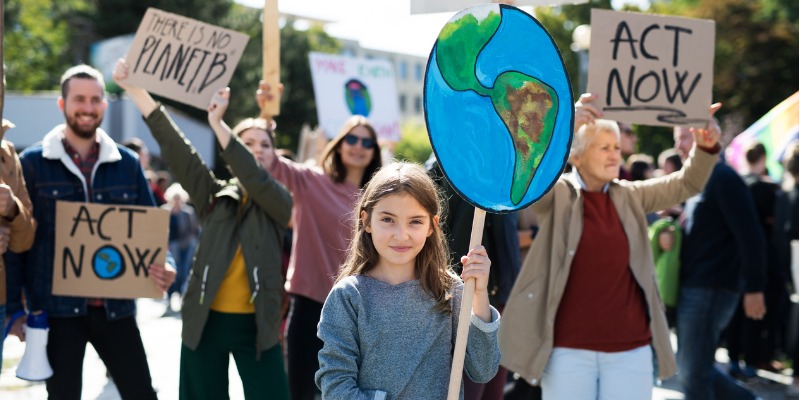Trudeau government spends billions on unnecessary ‘climate’ war

In the year before the pandemic, many people will recall, the media in Canada and internationally were booming Greta Thunberg. Then as the coronavirus spread around the world and governments imposed lockdowns, climate change fell off the front page and we saw much less of Greta—except for the time when CNN, for some bizarre reason, invited her to be an “expert panelist” at their COVID townhall last year.
The pandemic clouds are finally lifting thanks to vaccinations, so the Trudeau government has apparently decided that climate alarmism should again be at top of mind. To that end, they recently announced $3.3 million in public spending to help educate 300,000 children aged six to 12 about climate change and spur them into climate activism. They are intent on raising, it seems, an army of little Thunbergs.
According to Jonathan Wilkinson, the Minister of Environment and Climate Change, “with the tools acquired through this important project, young Canadians will continue to be leaders in the fight against climate change.” But it’s unclear why elementary school children should be leaders in anything. Should young children also be appointed to, for example, audit committees of large corporations, operate national restaurant chains or oversee construction of new hospitals?
If not, then why should they be leaders in climate activism?
The $3.3 million program is part of a larger $206 million in spending from the federal so-called Climate Action and Awareness Fund, which aims to increase youth climate activism, support “community-based climate action” and otherwise increase public alarm about climate change. This $206 million is, in turn, only a drop in the bucket of Ottawa’s vast climate spending portfolio.
In fact, the federal government recently boasted that since 2015, it spent more than “$100 billion in clean growth and brought forward a series of other measures, including a world-leading carbon pricing and rebate system and regulations to accelerate the phase-out of traditional coal fired electricity by 2030.” But massive spending programs and regulatory control are odd things for the government to brag about.
The Liberals advertised their carbon tax first by claiming that most families would financially benefit from the tax and rebate system (which is almost certainly false), and second by saying a carbon tax is the most efficient way to reduce emissions. The corollary of the latter point is that government spending and regulation are unnecessarily costly ways to fight climate change.
According to their own logic, the Liberals, by boasting about spending more than $100 billion on climate change are actually boasting about spending more than $100 billion unwisely. They attempt to justify their actions with claims of impending climate catastrophe. Minister Wilkinson, in describing the government’s climate commitments, spoke of “extreme impacts of climate change” and a “climate crisis” that “like the pandemic, demands urgency.” In reality, the science nowhere near justifies this sort of language or extravagant government policy.
Climate models, which tend to exaggerate future warming, typically produce cost estimates of “well below 10% of gross domestic product in the year 2100 and beyond,” as economists David R. Henderson and John H. Cochrane have written. Supposing 2 per cent annual growth, GDP would increase 388 per cent in eight decades, so that even the high estimate of a 10 per cent loss is not exactly apocalyptic. The alarmist language, massive spending, regulatory expansion and the raising of a little Thunberg army, therefore, are all most unnecessary.
Author:
Subscribe to the Fraser Institute
Get the latest news from the Fraser Institute on the latest research studies, news and events.

